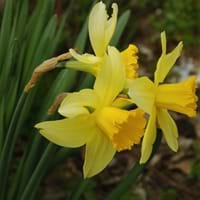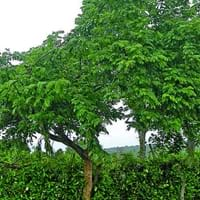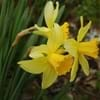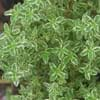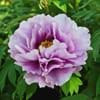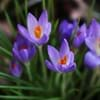Life Span
Perennial
Perennial
Origin
Asia, Central Asia, Eastern Asia, Southwest Europe
Mexico, Central America, South America
Types
Accent, Acropolls, Cassata,Dellbes, Flower parade, Hawera
Not available
Number of Varieties
Not Available
Habitat
Hillside, Open scrub, River side, Rocky areas, Scrubs, Woods
Subtropical climates, tropical environments, Tropical regions
USDA Hardiness Zone
3-9
10-15
Sunset Zone
A2, A3, 1a, 1b, 2a, 2b, 3a, 3b, 4, 5, 6, 7, 8, 9, 10, 11, 12, 13, 14, 15, 16, 17, 18, 19, 20, 21, 22, 23, 24
H1, H2, 13, 23, 24
Habit
Clump-Forming
Oval or Rounded
Flower Color
Ivory, Lemon yellow, Peach, White, Yellow, Yellow green
Pink, Light Pink
Flower Color Modifier
Bicolor
Bicolor
Fruit Color
Not Available
Green, Chocolate
Leaf Color in Spring
Green
Green
Leaf Color in Summer
Green
Green
Leaf Color in Fall
Green
Green
Leaf Color in Winter
Green
Green
Leaf Shape
Linear
Pinnate
Plant Season
All year
Spring
Sunlight
Part sun
Full Sun, Partial Sun
Type of Soil
Clay, Loamy, Sandy
Loam, Sand
The pH of Soil
Acidic
Acidic, Neutral, Alkaline
Soil Drainage
Well drained
Average
Bloom Time
Early Spring, Late Spring, Spring
Spring, Late Spring
Tolerances
Black Walnut Toxicity
Drought, Dry Conditions
Where to Plant?
Ground
Ground
How to Plant?
From bulbs
Stem Cutting
Plant Maintenance
Medium
Low
Watering Requirements
It cannot sustain wet-feet, Keep the ground moist but not water-logged, Water Deeply, Water when soil is dry
Average Water Needs, Keep the ground moist but not water-logged
In Summer
Lots of watering
Lots of watering
In Spring
Moderate
Moderate
In Winter
Average Water
Average Water
Soil pH
Acidic
Acidic, Neutral, Alkaline
Soil Type
Clay, Loamy, Sandy
Loam, Sand
Soil Drainage Capacity
Well drained
Average
Sun Exposure
Part sun
Full Sun, Partial Sun
Pruning
Cut or pinch the stems, Prune to control growth, Remove dead leaves, Remove dead or diseased plant parts
Remove damaged leaves, Remove dead branches, Remove dead leaves
Fertilizers
All-Purpose Liquid Fertilizer
All-Purpose Liquid Fertilizer, Fertilize in early spring, Nitrogen, Phosphorous, Potassium, Requires high amount of nitrogen
Pests and Diseases
Basal rot, Crown rot, Fire, Leaf spot, Scorch, Viruses
Aphids, Brown Spots, Scab, Scorch
Plant Tolerance
Drought
Drought, Dry Conditions
Flower Petal Number
Single, Double
Single
Showy Fruit
No
Not Available
Fragrant Flower
Yes
Not Available
Foliage Texture
Medium
Medium
Foliage Sheen
Matte
Matte
Attracts
Not Available
Bees, Not Available
Allergy
Asthma, Rhinoconjunctivitis
Not Available
Aesthetic Uses
Showy Purposes
Beautification, Showy Purposes
Beauty Benefits
Not Available
Good for skin, Reduce Bruises
Environmental Uses
Air purification
Agroforestry, Fixes Nitrogen, Insect Repellent, soil stabilisation
Medicinal Uses
Asthma, Cold, Cough, Vomiting
Antifungal, Cold, Expectorant, Fever, Rheumatism, Sedative, Ulcers
Part of Plant Used
Flowers, Leaves
Flowers
Other Uses
Showy Purposes
Cattle Fodder, Used as firewood, Wood is used for making furniture
Used As Indoor Plant
No
No
Used As Outdoor Plant
Yes
Yes
Garden Design
Not Available
Shade Trees, Street Trees, Tropical
Botanical Name
Narcissus
GLIRICIDIA sepium
Common Name
Daffodil
Mexican Lilac, Mother-of-coffee, Quickstick
In Hindi
हलका पीला
QUICKSTICK
In German
Narzisse
QUICKSTICK
In French
Jonquille
QUICKSTICK
In Spanish
Narciso
QUICKSTICK
In Greek
ασφόδελος
QUICKSTICK
In Portuguese
Abrótea
QuickStick
In Polish
żonkil
QUICKSTICK
In Latin
Asphodelus
Quickstick
Phylum
Magnoliophyta
Magnoliophyta
Class
Liliopsida
Magnoliopsida
Order
Asparagales
Fabales
Family
Amaryllidaceae
Fabaceae
Genus
Narcissus
Gliricidia
Clade
Angiosperms, Monocots
Angiosperms, Eudicots, Rosids
Tribe
Narcisseae
Robinieae
Subfamily
Amaryllidoideae
Faboideae
Importance of Daffodil and Quickstick
Want to have the most appropriate plant for your garden? You might want to know the importance of Daffodil and Quickstick. Basically, these two plants vary in many aspects. Compare Daffodil and Quickstick as they differ in many characteristics such as their life, care, benefits, facts, etc. Every gardener must at least have the slightest clue about the plants he wants to plant in his garden. Compare their benefits, which differ in many ways like facts and uses. The medicinal use of Daffodil is Asthma, Cold, Cough and Vomiting whereas of Quickstick is Antifungal, Cold, Expectorant, Fever, Rheumatism, Sedative and Ulcers. Daffodil has beauty benefits as follows: Not Available while Quickstick has beauty benefits as follows: Not Available.
Compare Facts of Daffodil vs Quickstick
How to choose the best garden plant for your garden depending upon its facts? Here garden plant comparison will help you to solve this query. Compare the facts of Daffodil vs Quickstick and know which one to choose. As garden plants have benefits and other uses, allergy is also a major drawback of plants for some people. Allergic reactions of Daffodil are Asthma and Rhinoconjunctivitis whereas of Quickstick have Not Available respectively. Having a fruit bearing plant in your garden can be a plus point of your garden. Daffodil has no showy fruits and Quickstick has no showy fruits. Also Daffodil is not flowering and Quickstick is not flowering . You can compare Daffodil and Quickstick facts and facts of other plants too.
